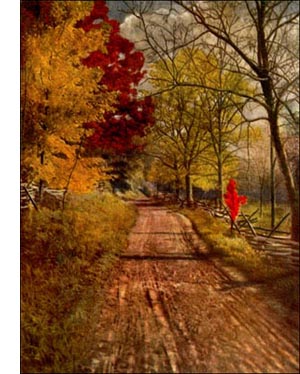Madrona Tree
 Madrona (Arbutus Menziesii, Pursh.)-Evergreen shrub or tree 40 to 100 feet high, with smooth, reddish brown bark, and smooth red branches. Wood heavy, hard, strong, reddish brown, close grained. Leaves alternate, persistent, entire, rounded or heart shaped at base, oval or oblong, 3 to 4 inches long, smooth, shining above, glaucous beneath.
Madrona (Arbutus Menziesii, Pursh.)-Evergreen shrub or tree 40 to 100 feet high, with smooth, reddish brown bark, and smooth red branches. Wood heavy, hard, strong, reddish brown, close grained. Leaves alternate, persistent, entire, rounded or heart shaped at base, oval or oblong, 3 to 4 inches long, smooth, shining above, glaucous beneath. Flowers white, in erect panicles, 5 to 6 inches long, monopetalous, ovate, 1/3 inch long, perfect. Fruit a globular, many-seeded berry, 1/2 inch long, orange red, edible. Preferred habitat, well-drained soil in situations protected from dry winds.
Distribution, coast region, British Columbia to California; on mountain slopes becoming shrubby. Uses: Valuable ornamental tree in warm-temperate climates. , Wood used for furniture, charcoal, and bark for tanning leather.
"The Madrona, clad in thin, smooth, red and yellow bark and big glossy leaves, seems in the dark coniferous forests of Washington and Vancouver Island, like some lost wanderer from the magnolia groves of the South."
No American tree of considerable size equals this one in beauty the year around. It bears large conical clusters of white flowers, above the vivid green of its leathery leaves. The tree is further lightened by silvery leaf linings. The red-brown trunk and bright red branches add a rich colour note, which is intensified when the copious scarlet fruits appear and the two-year-old leaves turn to scarlet or orange in the autumn.
Even among the redwoods this arbutus is a tree that commands attention and admiration at every season. The wood tempts the charcoal burner to chop down trees whose beauty ought to save them from destruction. The Japan Current makes them hardy in the west coast regions, and they thrive in the gardens of western and southern Europe.